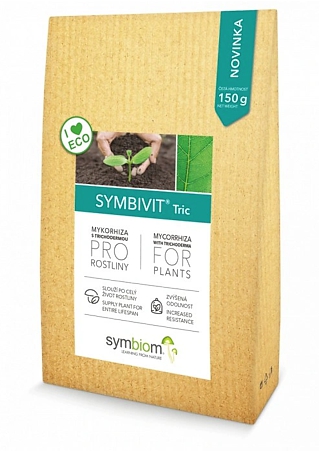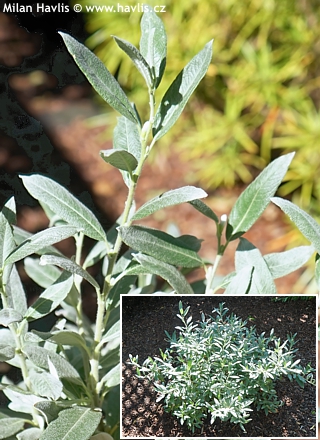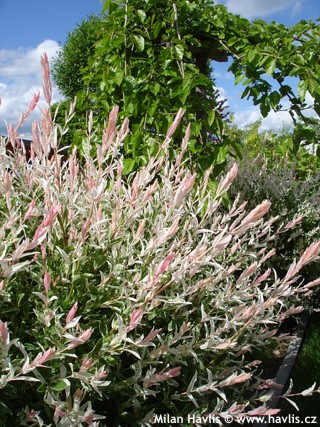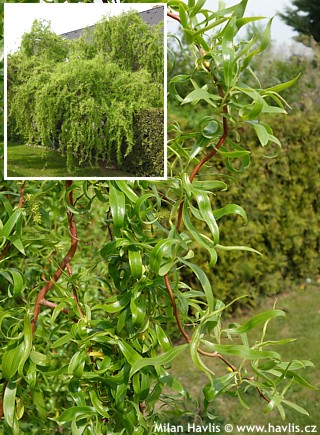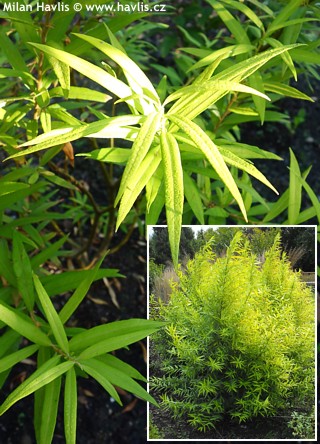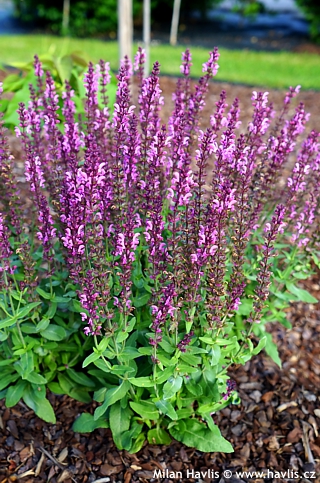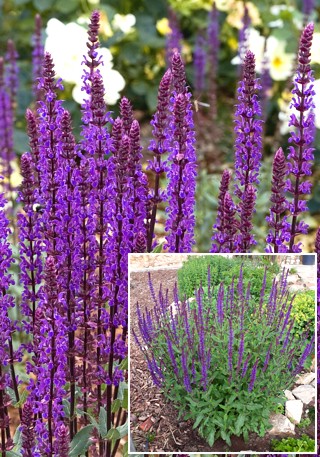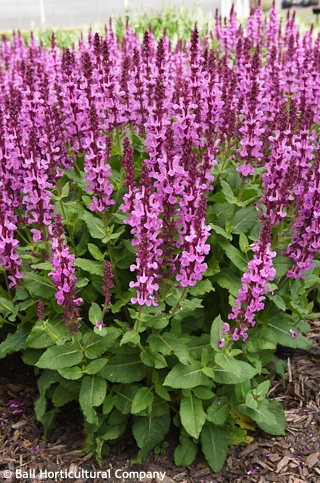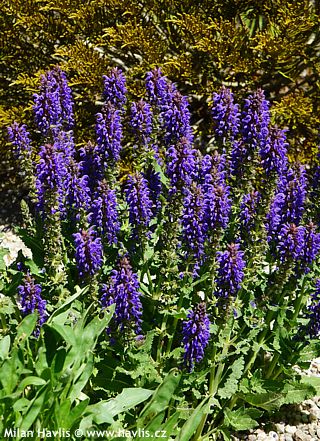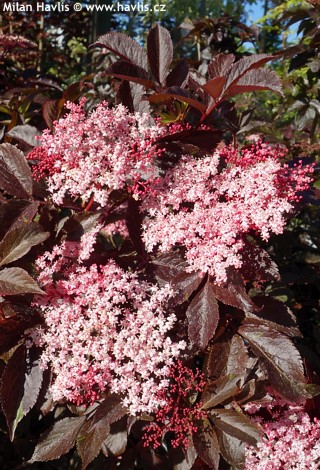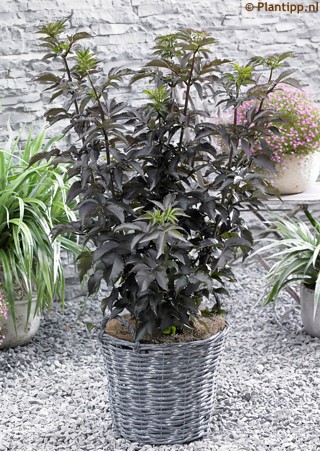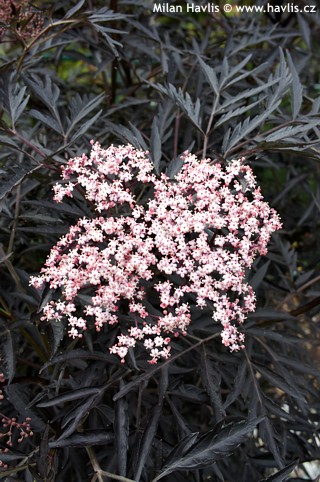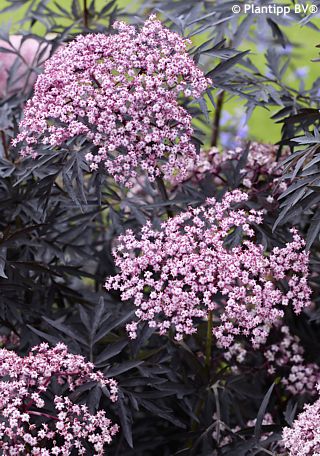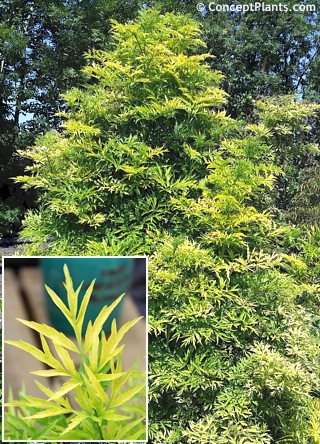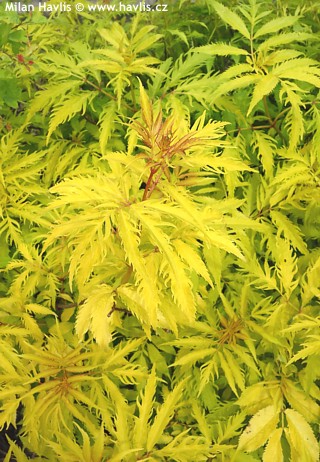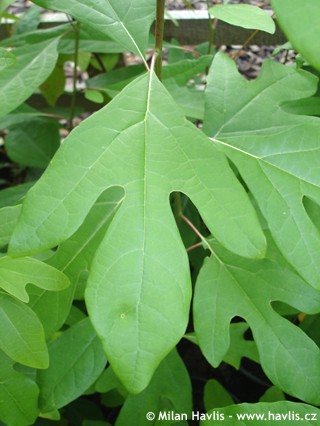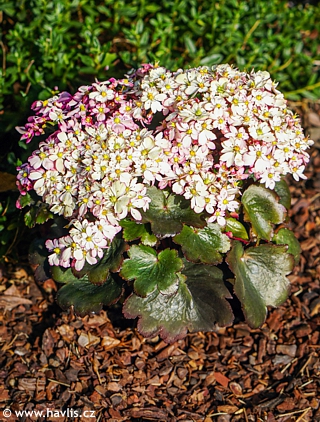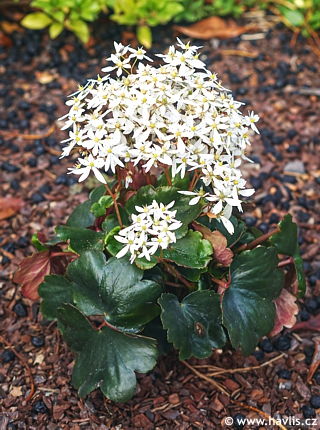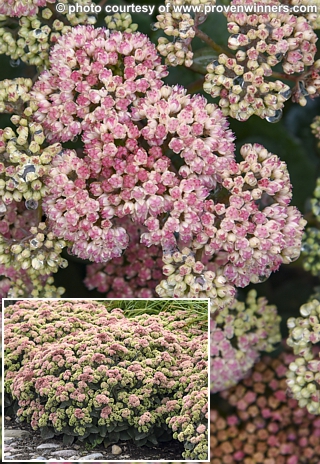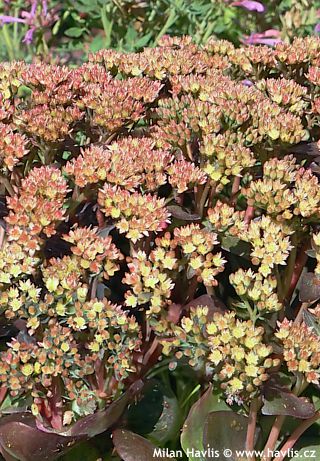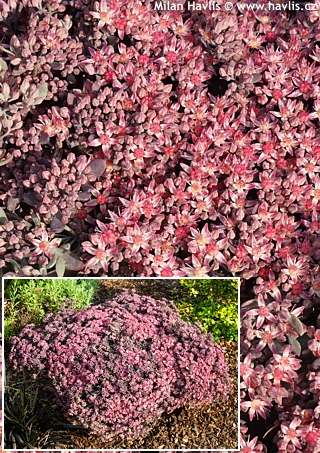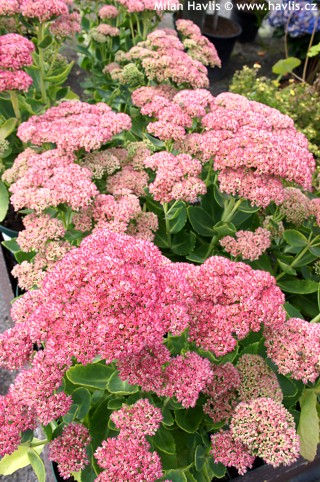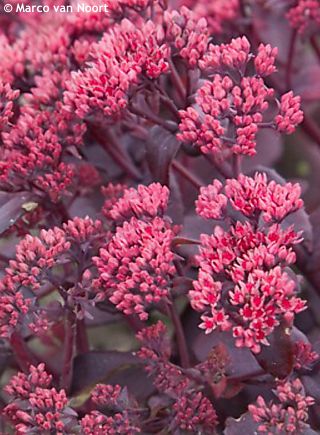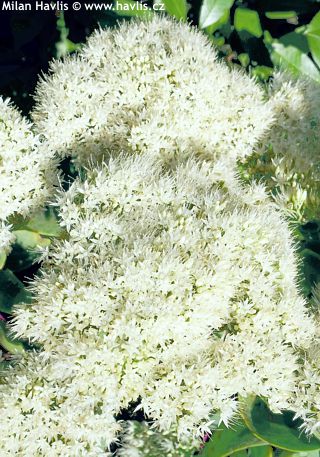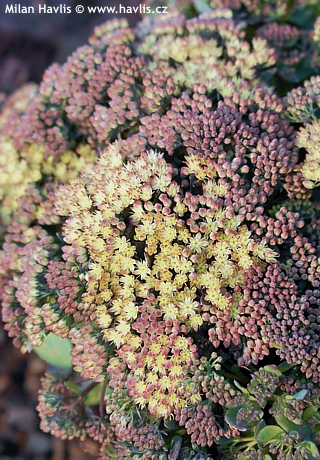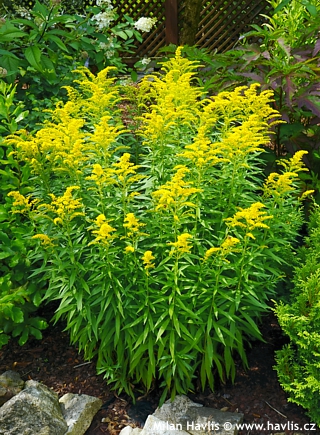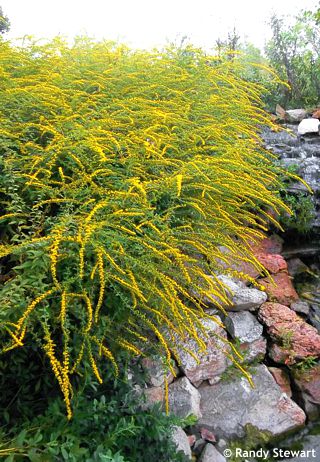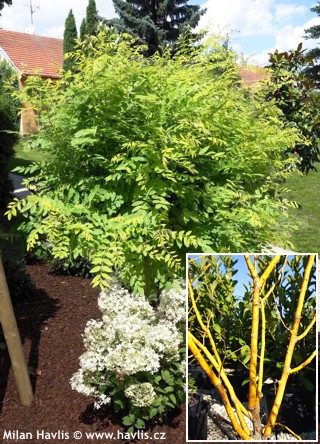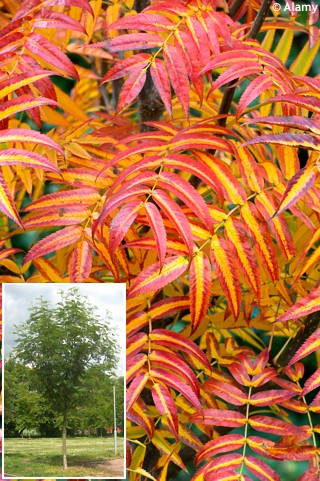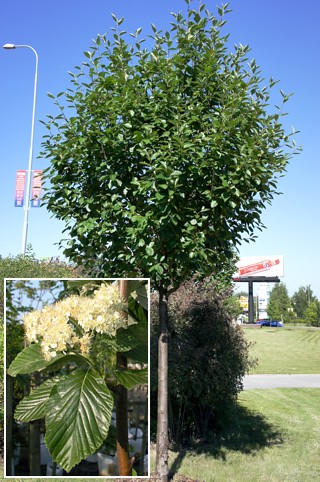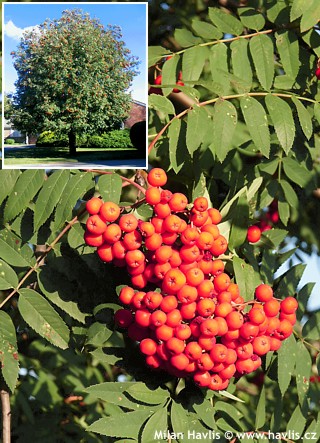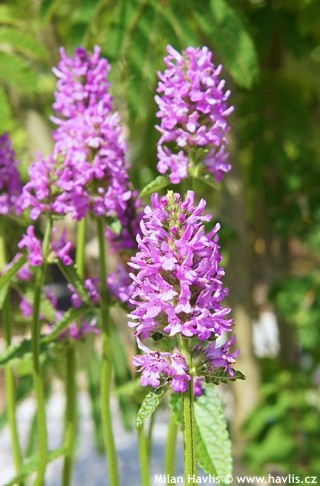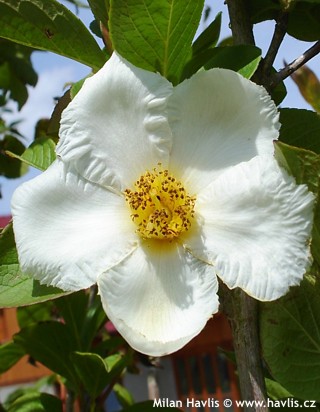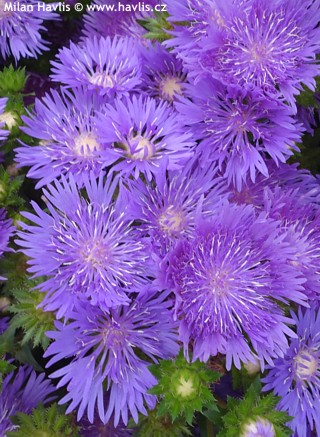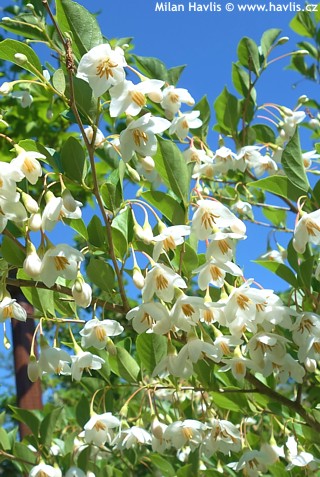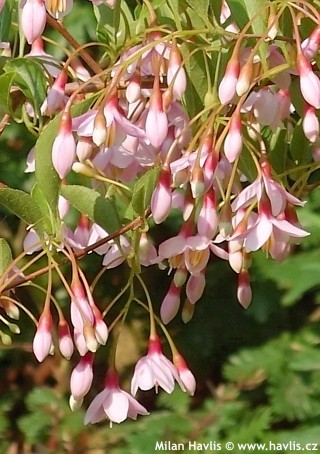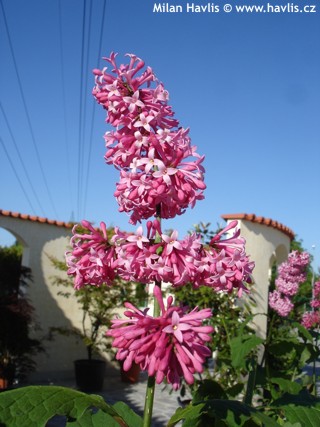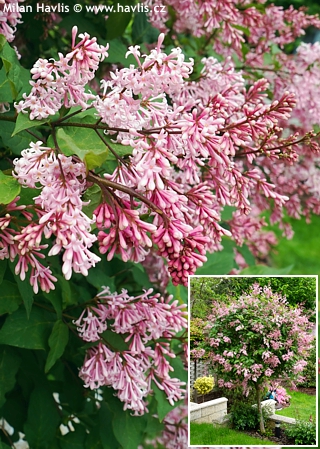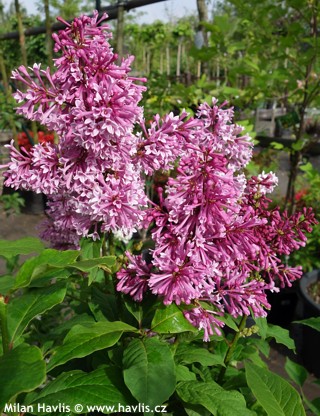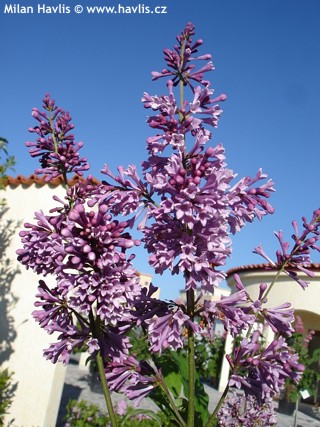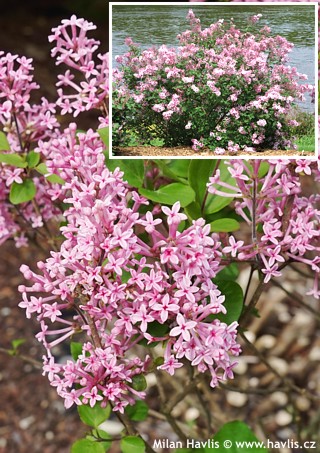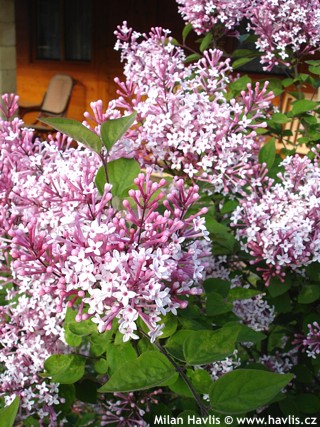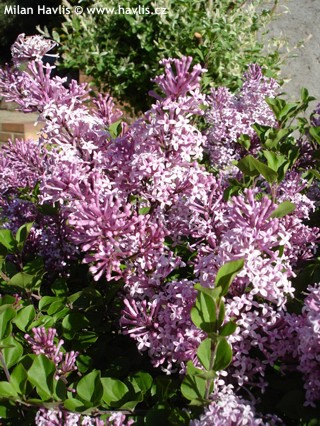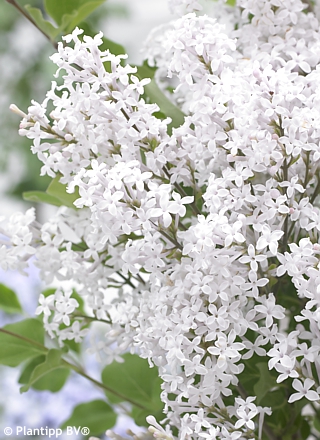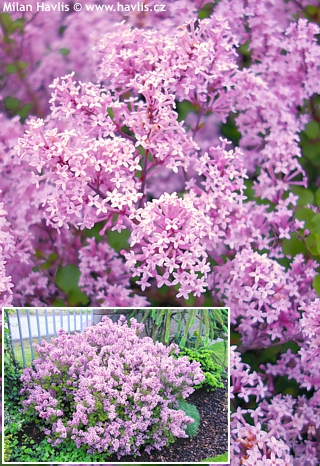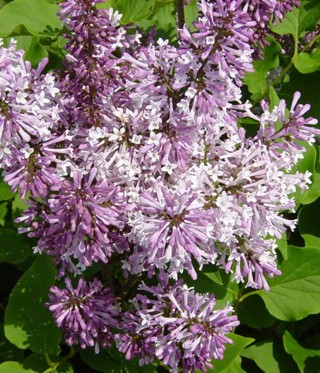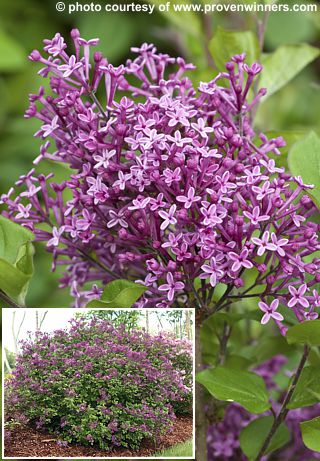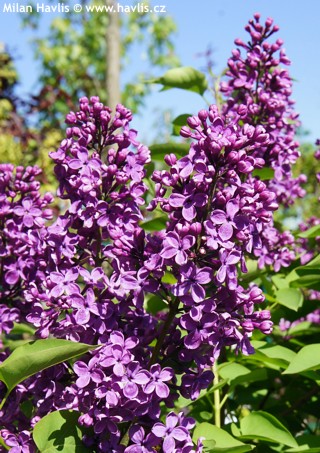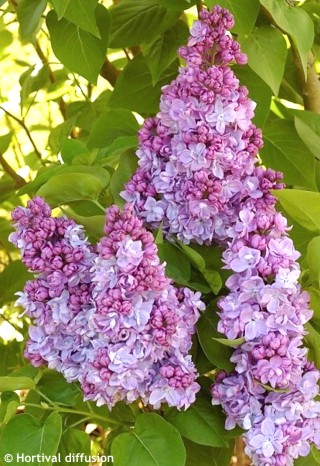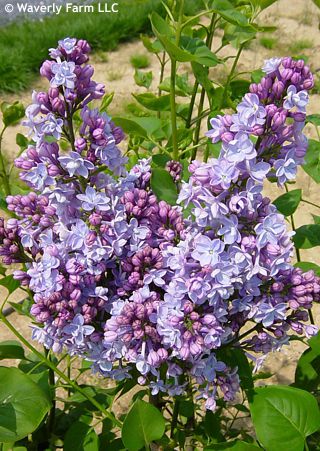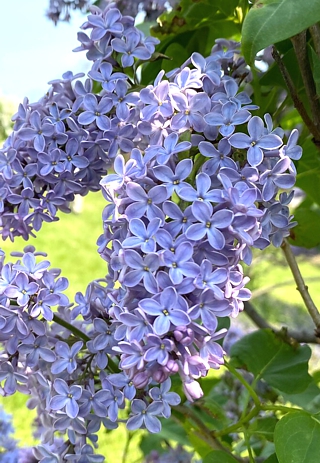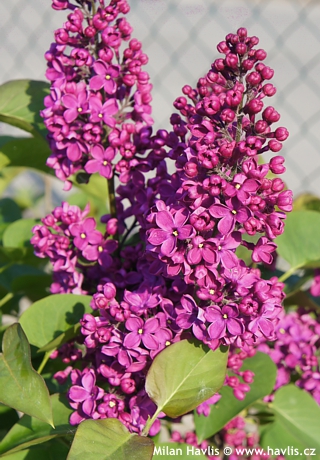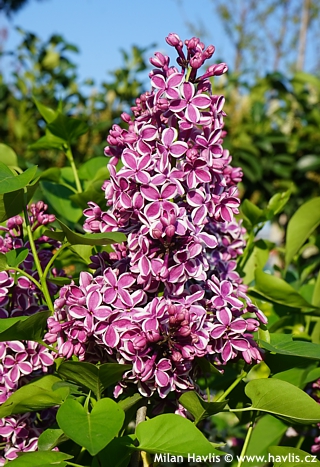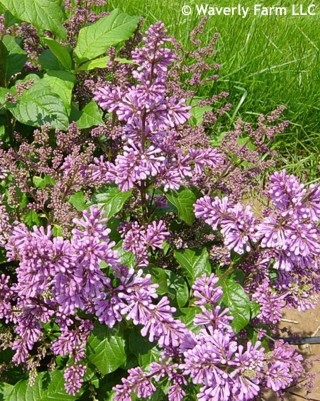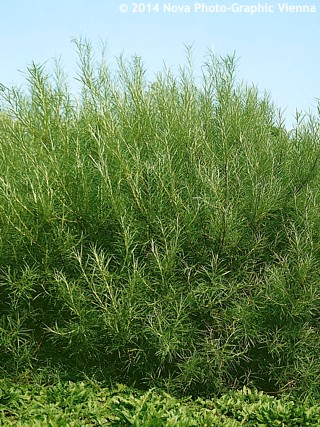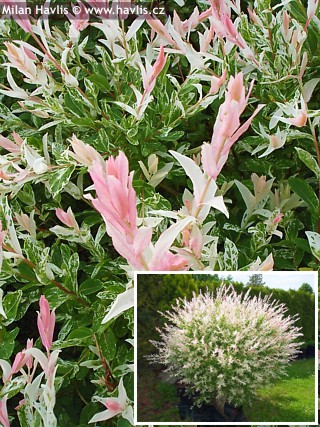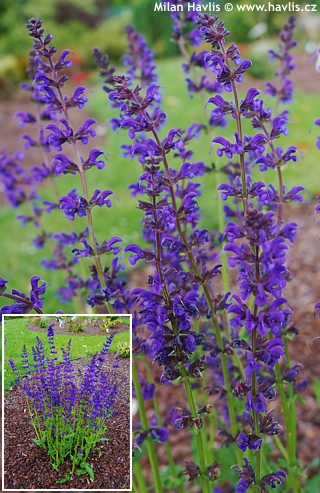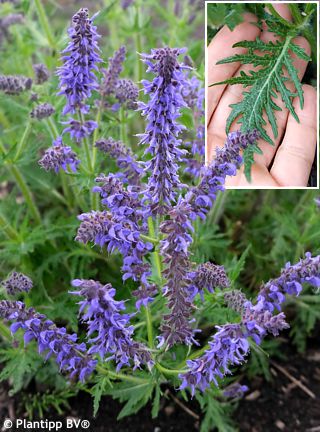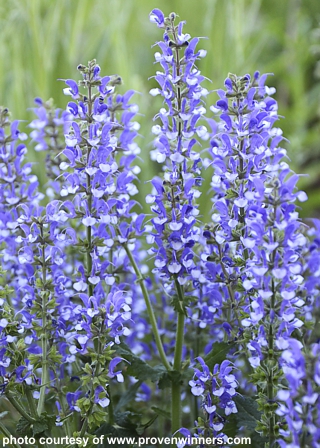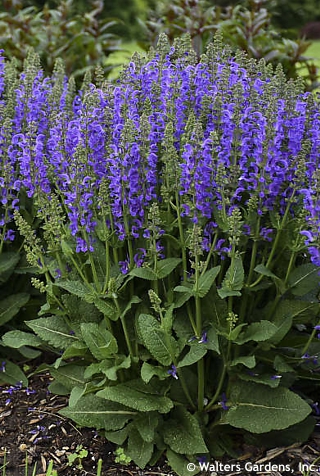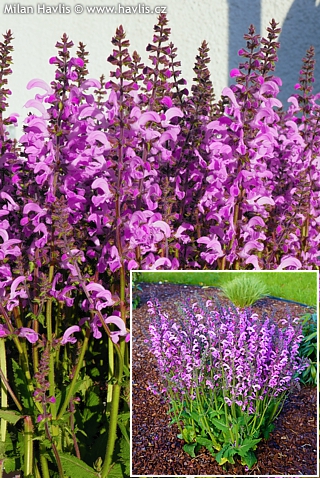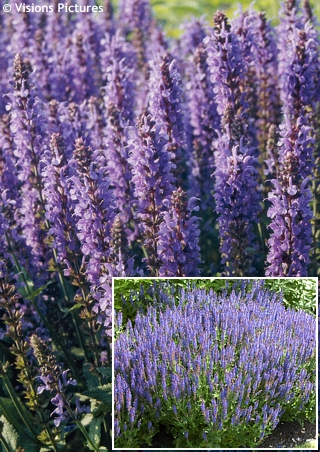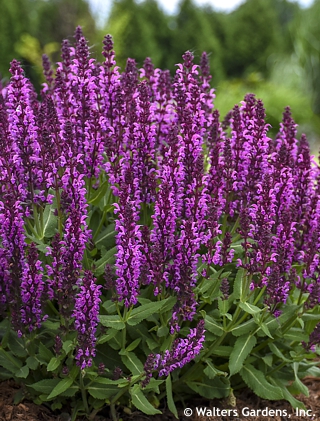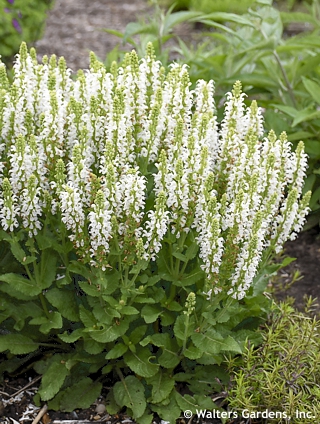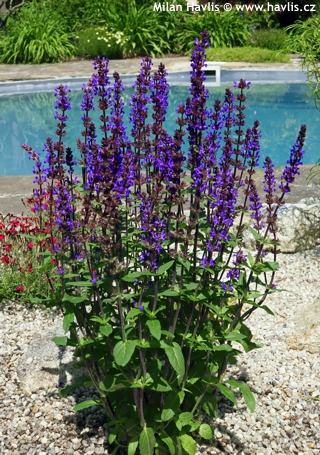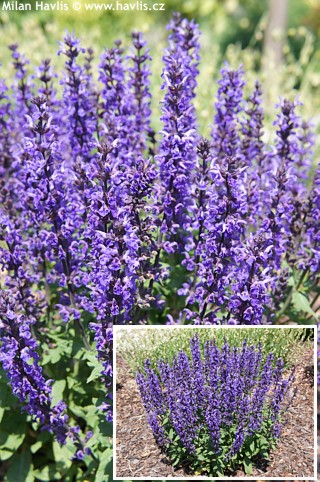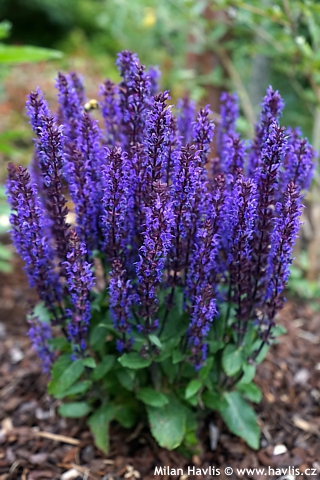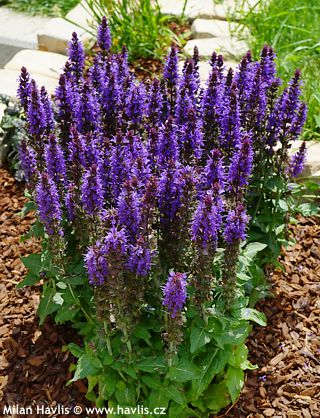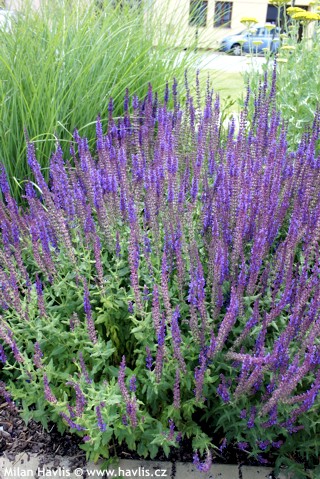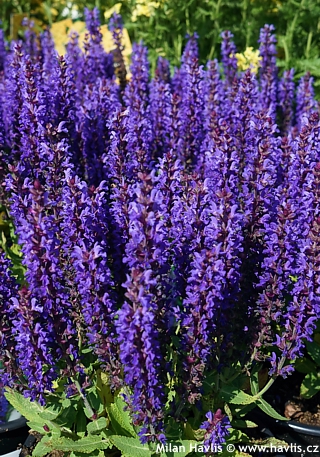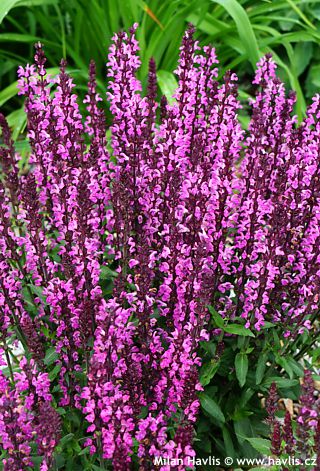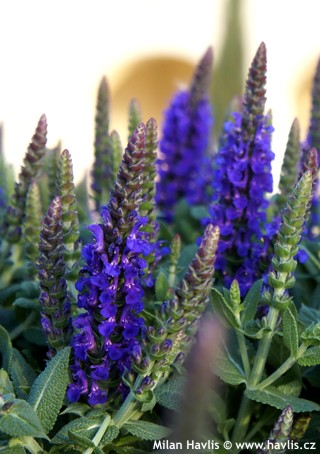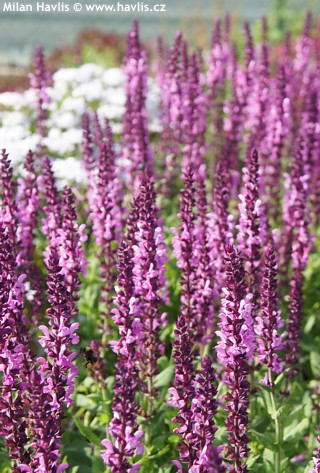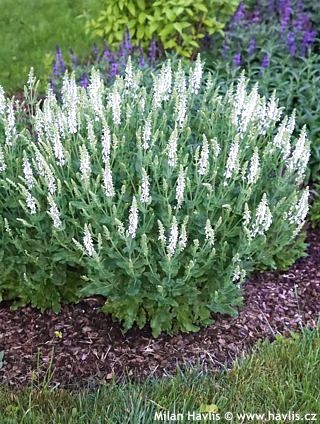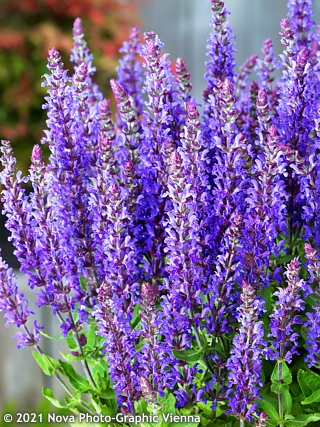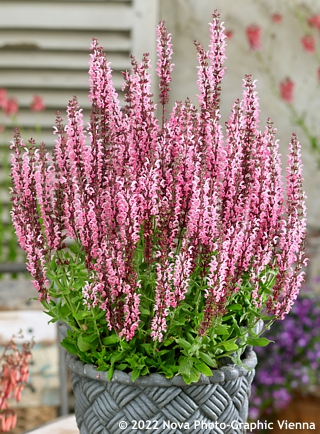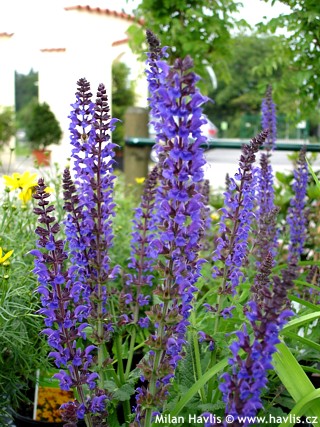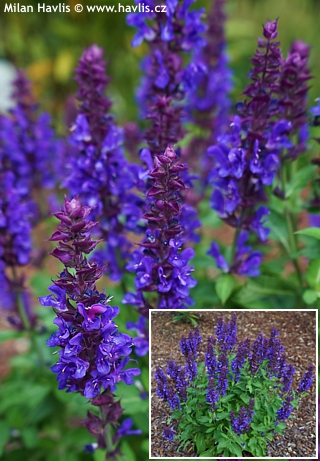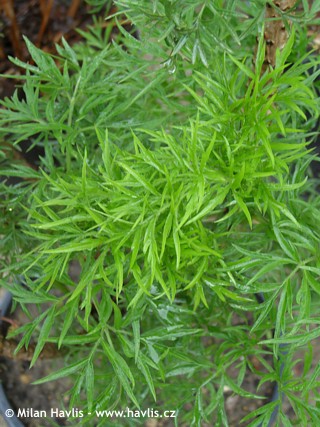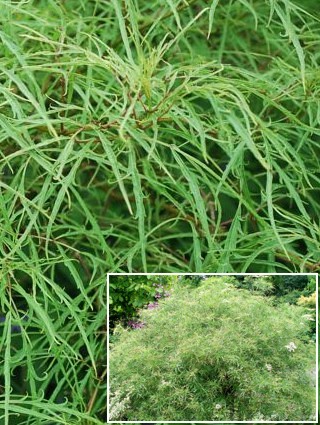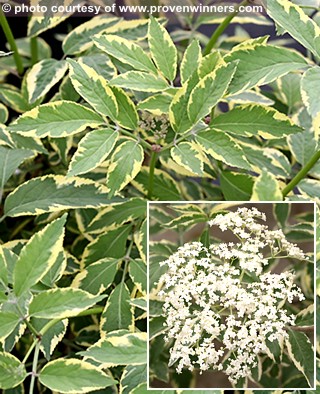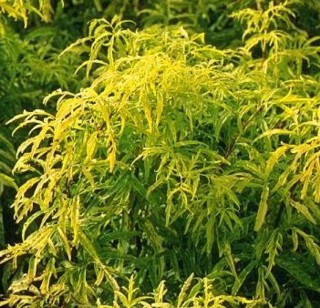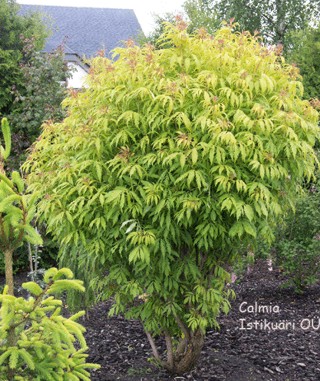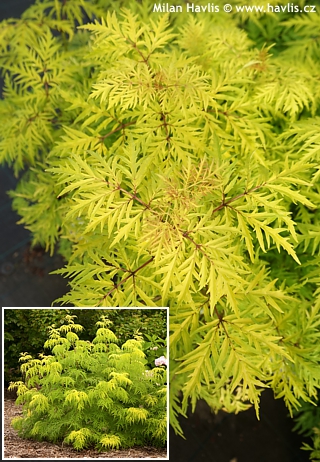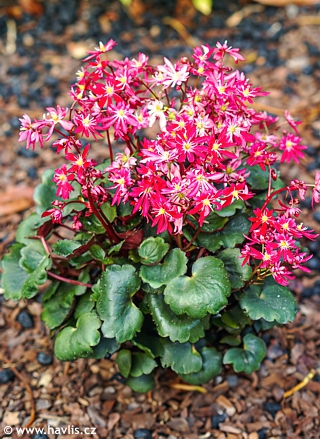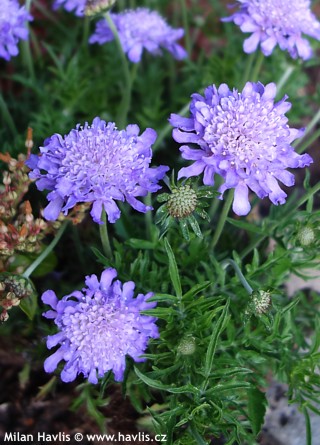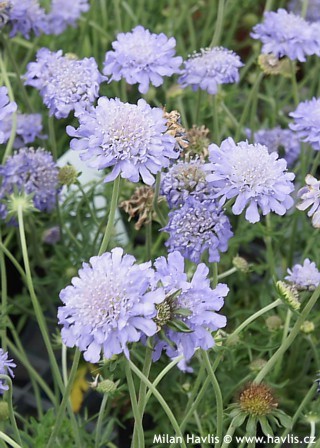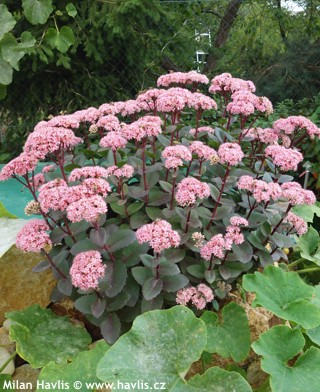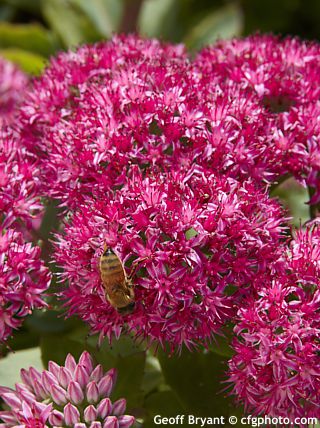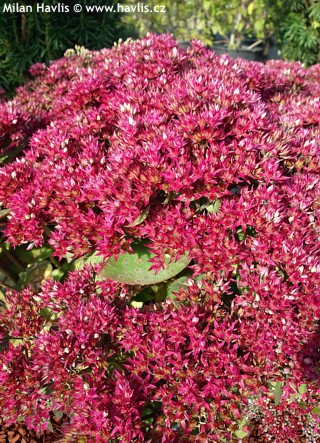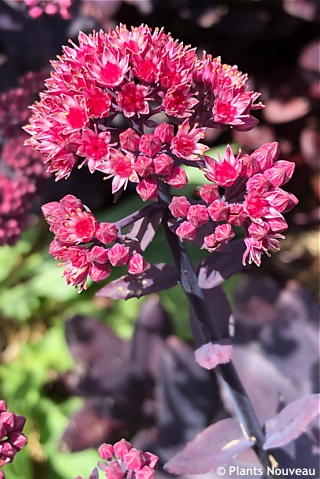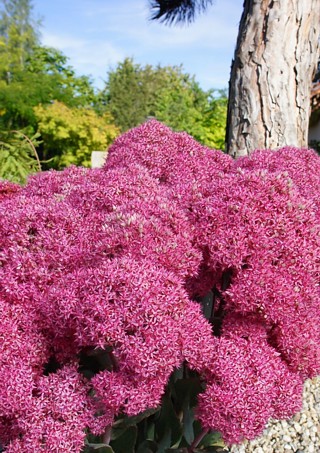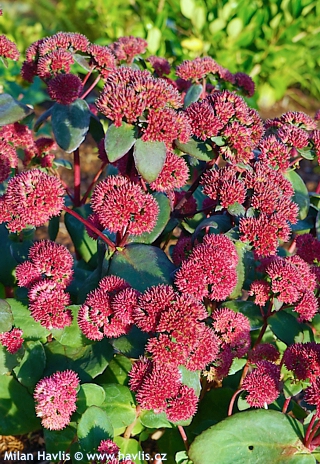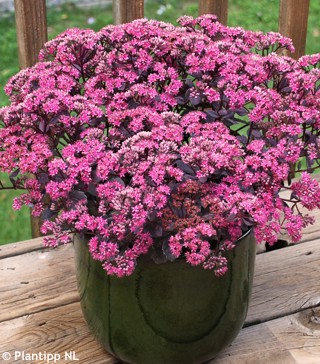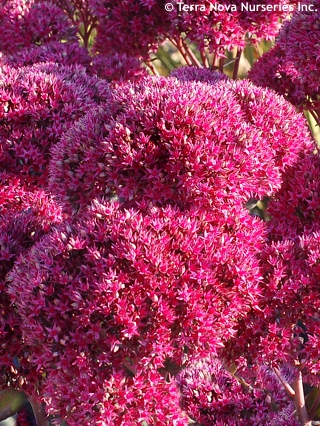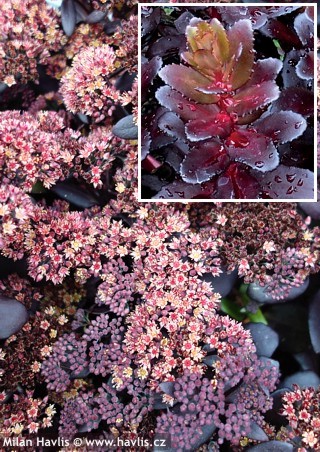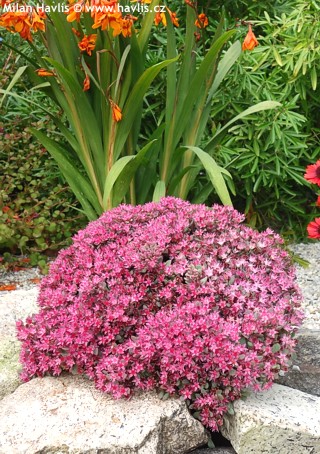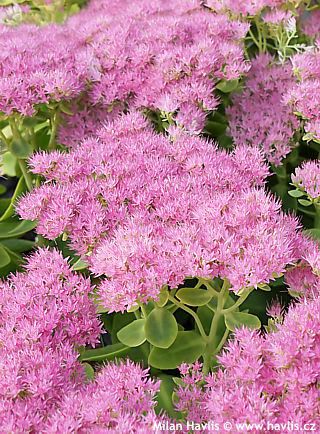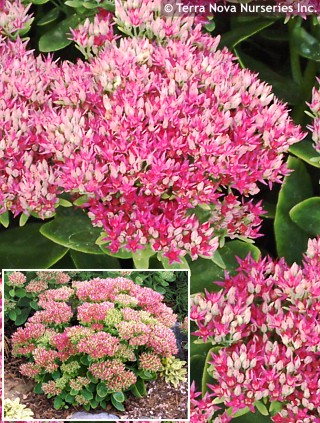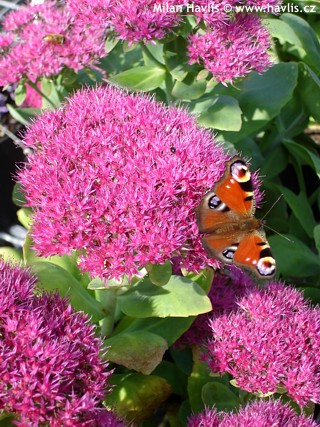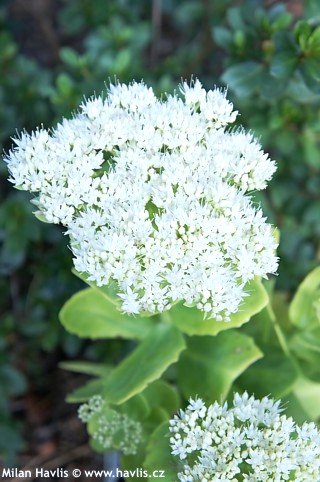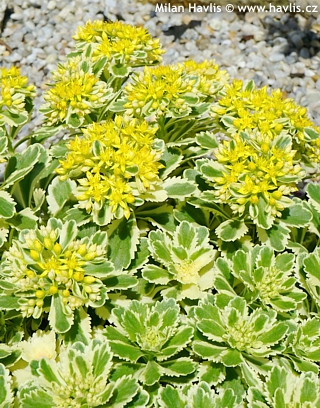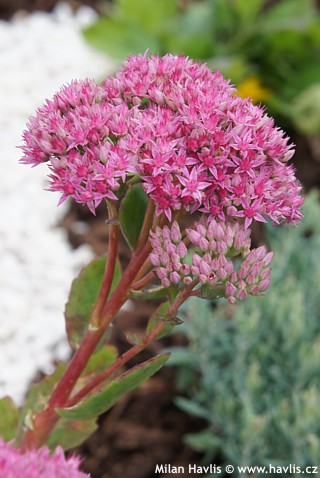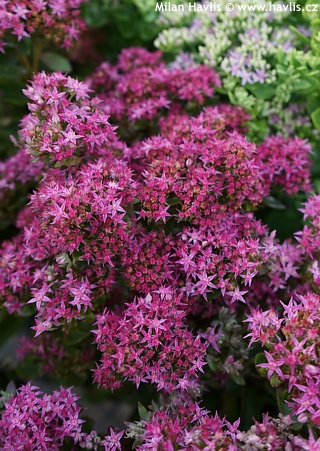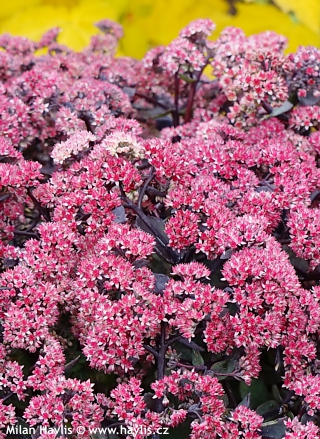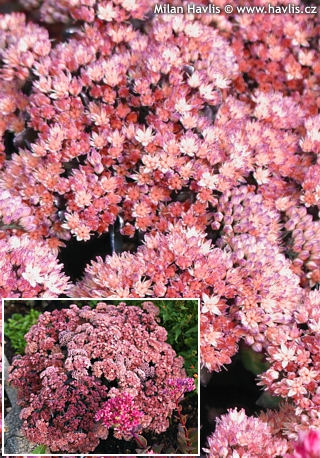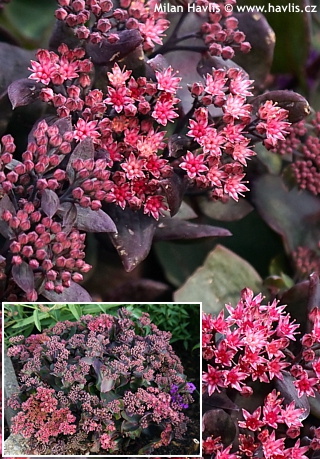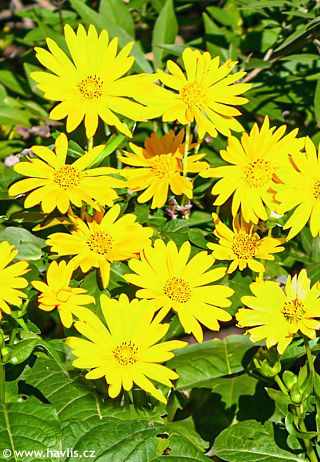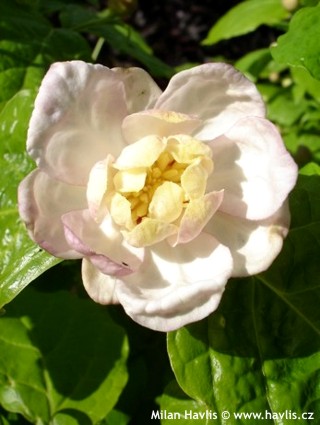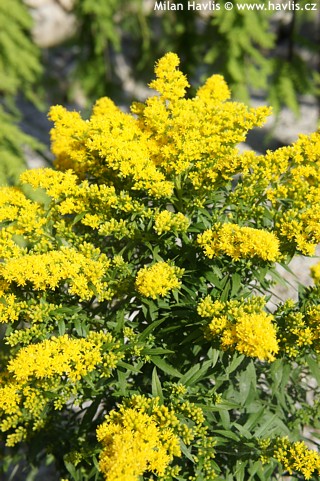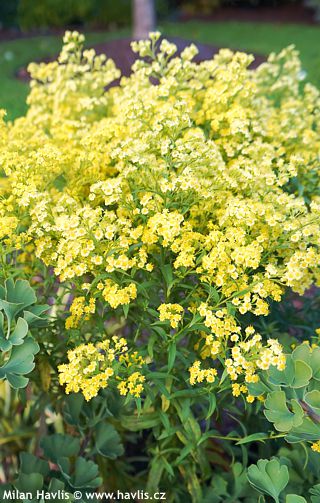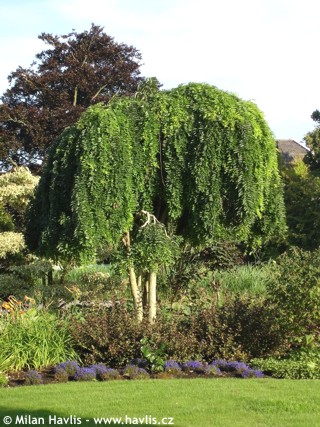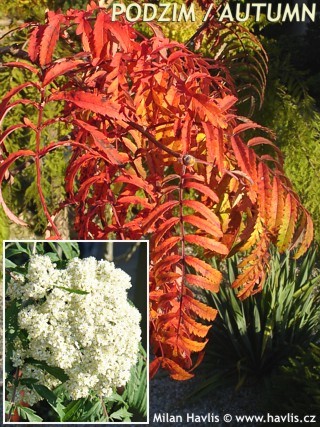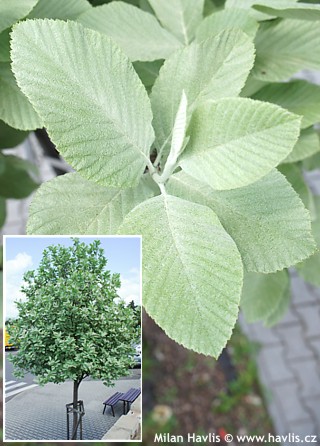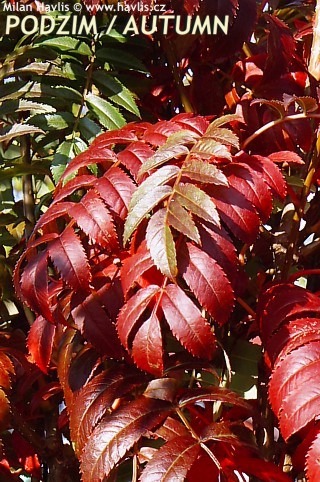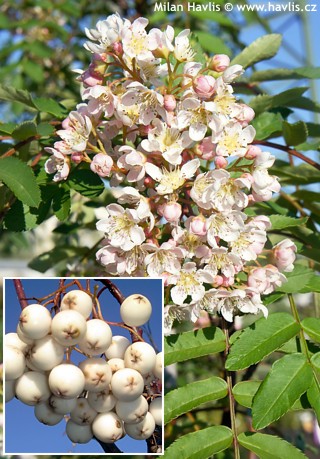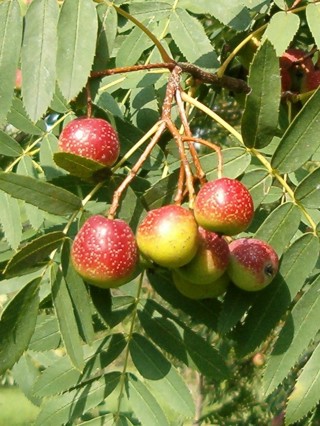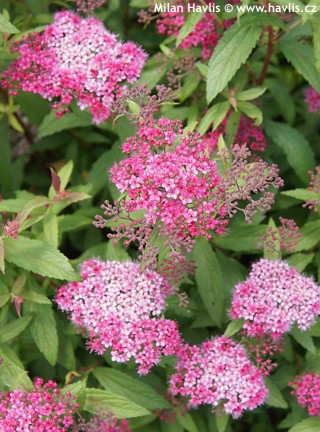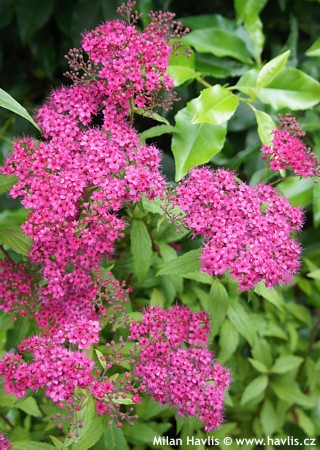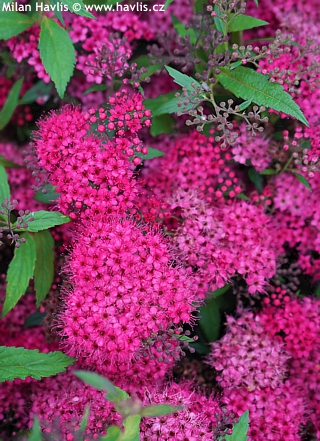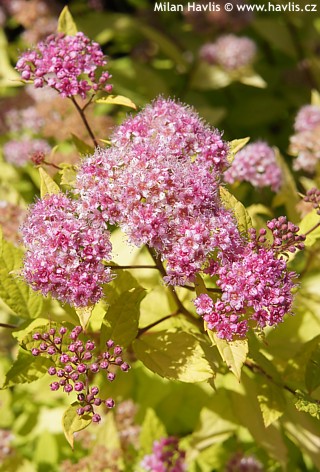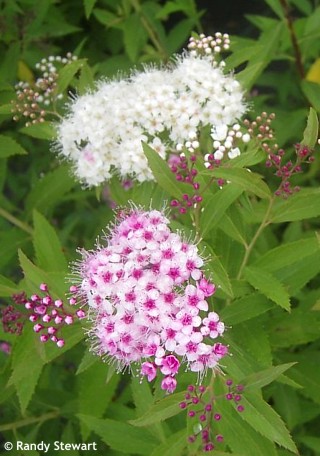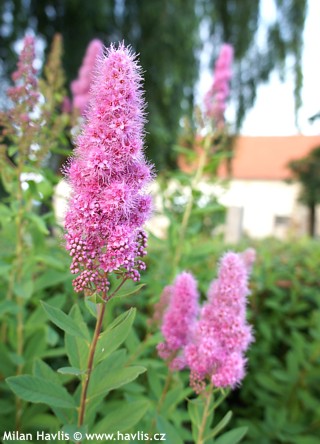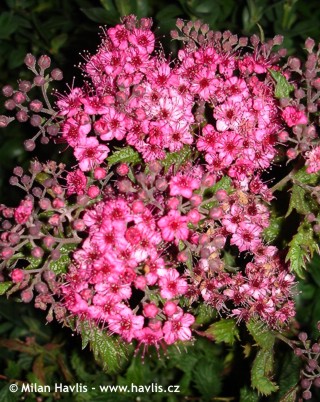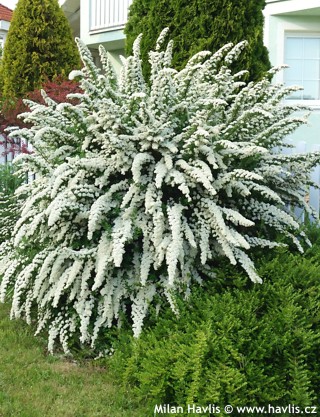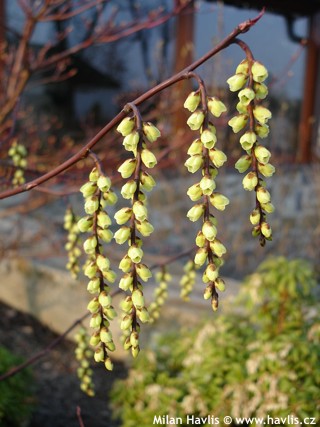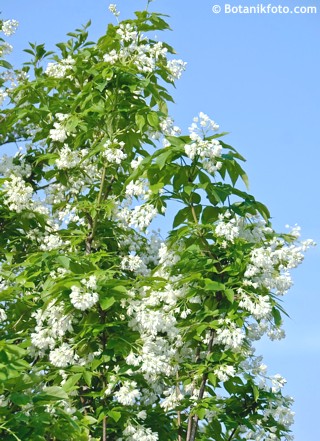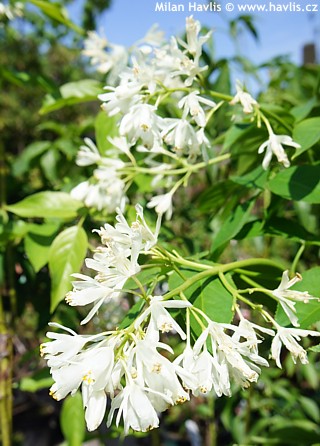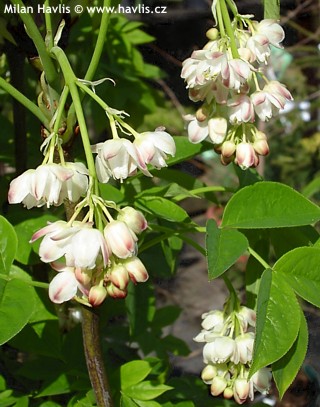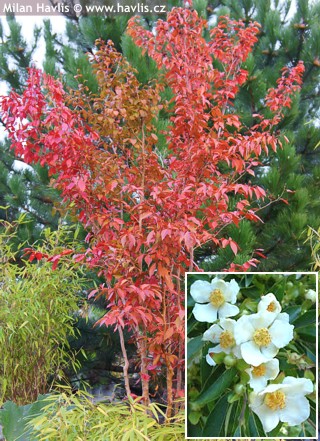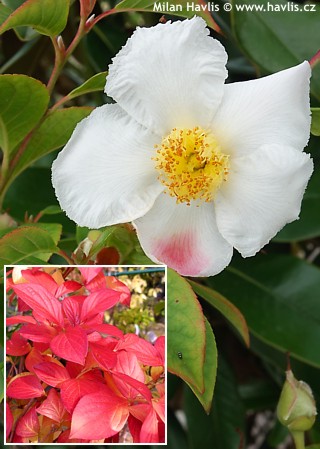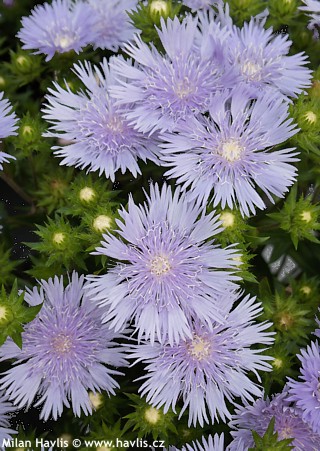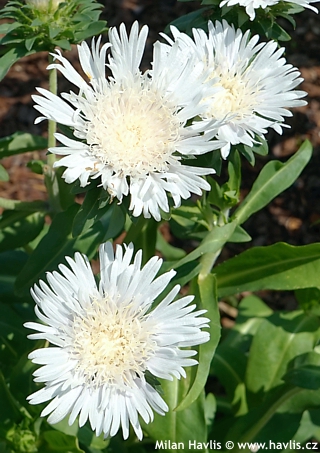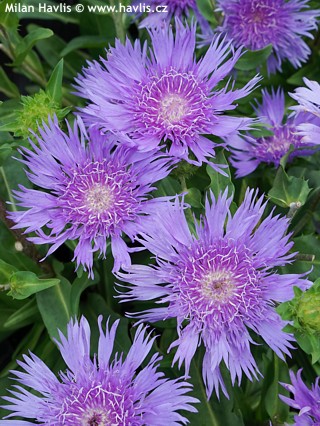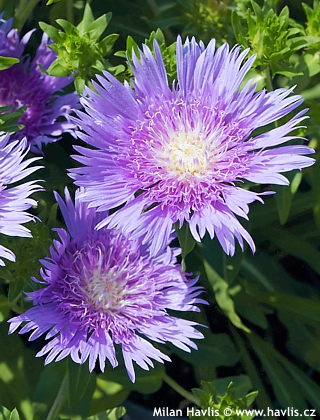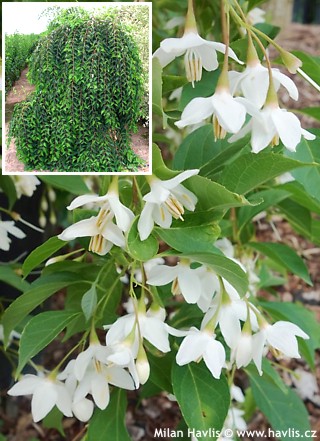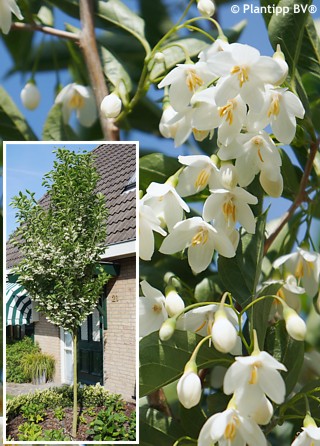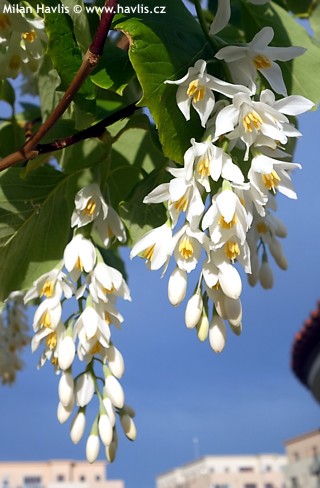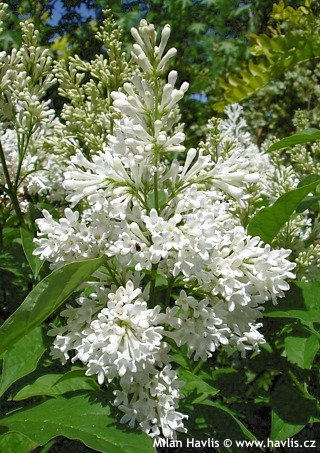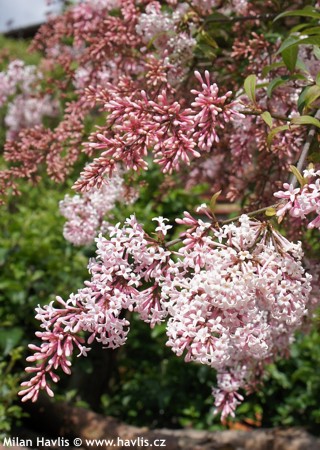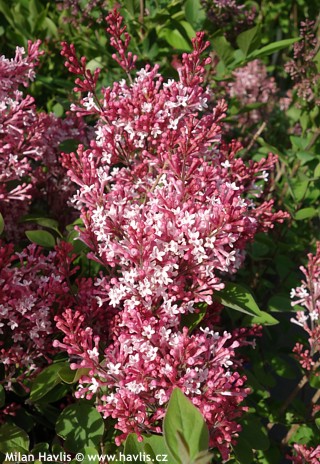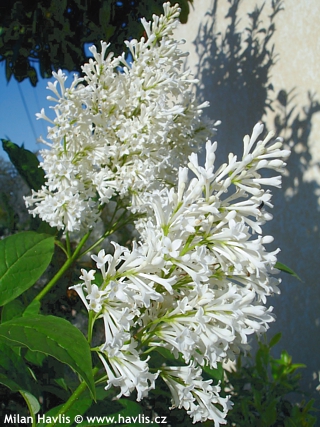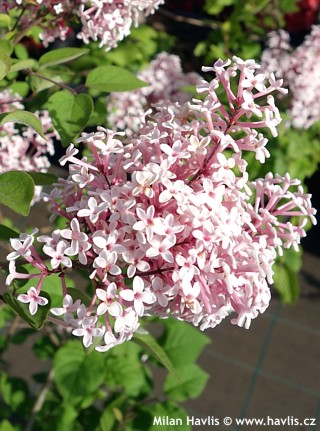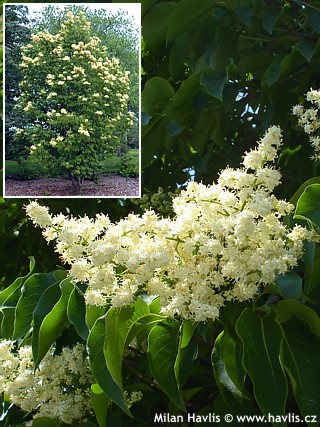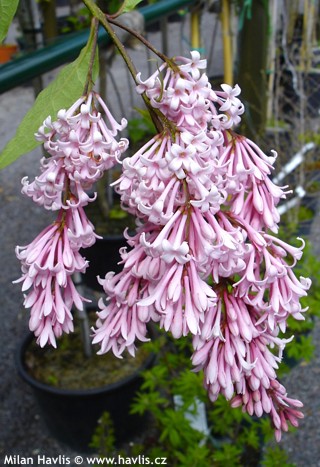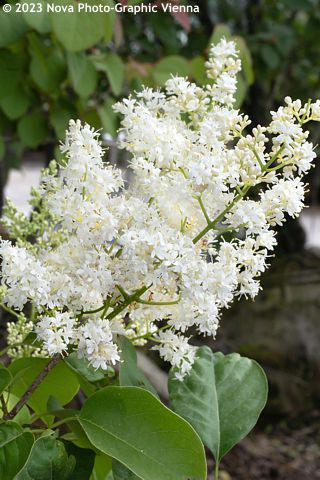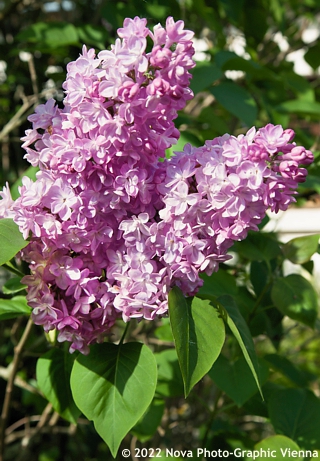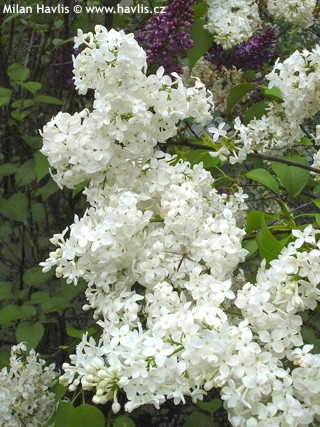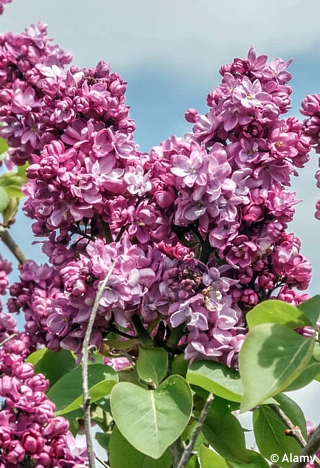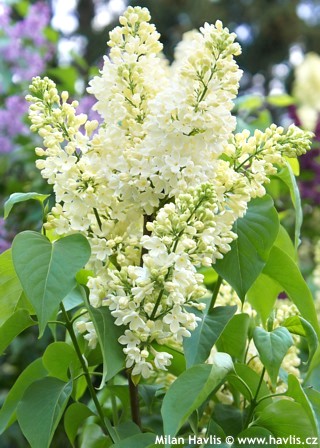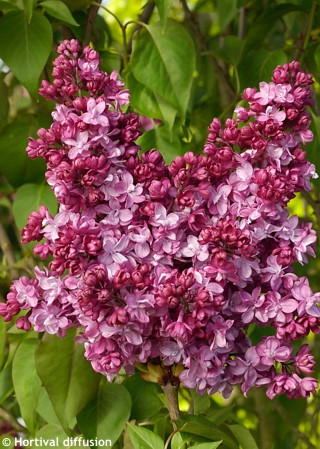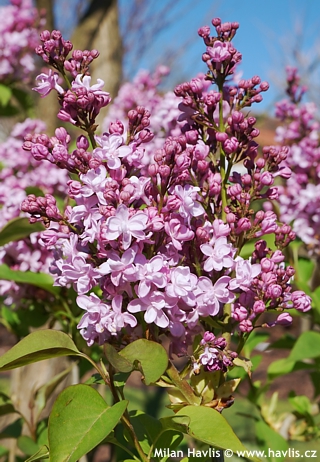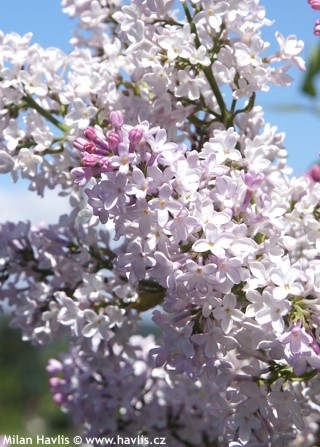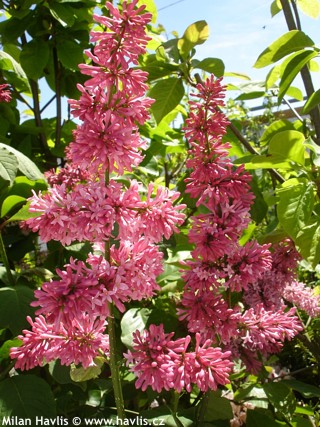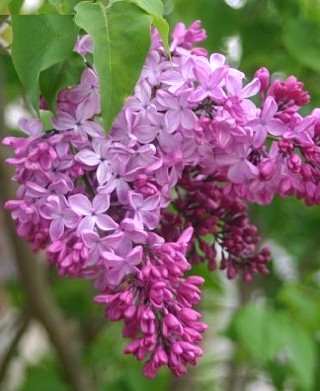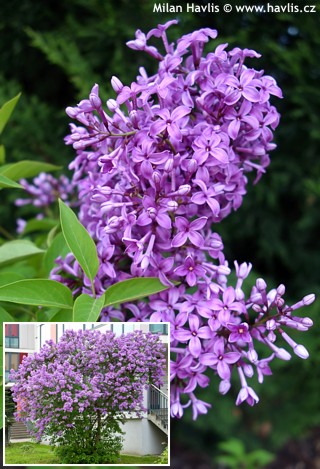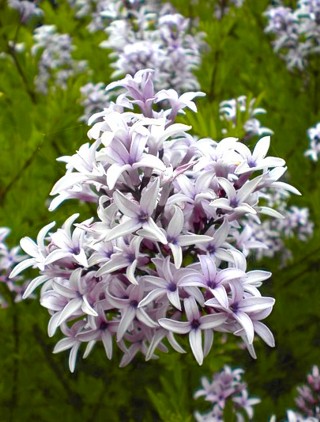CURRENTLY IN STOCK:
SunSeekers is a coneflower series comprising of many flower colours, all of which are stunning, rich, and non-fading. Plants have exceptional vigour and dense habit. Ray florets are usually shorter and in case of this variety called SUNSEEKERS Orange they are coloured like a sunset after a hot and s ...
Swiss willow is a cute little shrub, a uniquely dwarf version of willow. It is our native taxon whose natural habitat extends north-east to Poland, south-west to France, and is most often found in the Alps and Tatras. You can recognize it by its smoot, soft leaves. They are deciduous, 5-6 cm long, n ...

0,5 - 1m

0,5 - 1,3m

full sun

for zone 5+6

for zone 7
Hakuro Nishiki dappled willow is probably the most popular willow in our country. It originated in Japan and was introduced to Europe by a Dutch botanist Harry van den Laar in 1979. Its deciduous leaves are small, elliptic, 3-4 cm long, pea green with rich cream-white variegation. When new leaves em ...

1,5 - 3,5m

1 - 3m

full to partial sun

4 (down to -34°C)

for zone 5+6

for zone 7
Dragon's claw willow called Tortuosa is possibly the most popular variety of this species. It produces upright, twisted branches which become pendent with age, creating a very romantic scenery, especially with an elegant bench under its wide canopy.
Tortuosa willow has deciduous, soft green, glossy ...

4 - 8m

3 - 6m

full to partial sun

for zone 5+6

for zone 7
Golden Sunshine willow makes very elegant, narrowly lance-shaped, deciduous leaves which emerge bright yellow green, mature golden yellow in summer, and turn chartreuse in late summer and autumn. They are 7-10 cm long and withstand summer heat and direct sunshine without sunburn. Catkins are produce ...

2 - 4m

2 - 4m

full to partial sun

5b (down to -27°C)

for zone 5+6

for zone 7
APEX™ is a woodland sage series brought by Israeli breeding company Danziger. All three available colour modifications available so far (blue, pink, and white) boast compact and very dense, almost uniform growth and profuse flowering in their first year. Apex™ Pink sage produces numerous ...

VI - VIII

0,2 - 0,3m

0,3 - 0,4m

full to partial sun

for zone 5+6

for zone 7
Caradonna is a beautiful wood sage which looks like annual salvia farinacea, yet this beauty is a true perennial. Caradonna makes compact clumps with erect stems 40-60 cm tall, very dark purple blue, almost black, bearing numerous deep violet-blue flowers in spike-like inflorescences. Main flowering ...

V - IX

0,4 - 0,6m

0,4 - 0,5m

full to partial sun

4 (down to -34°C)

for zone 5+6

for zone 7
Rose Marvel is another unique woodland sage variety from Christa Kievit with extremely large, right purple pink flowers, possibly the largest we’ve seen so far on any woodland sage. They open from deep burgundy red calyxes and are formed in erect, 10-15 cm tall spikes atop 25-30 cm long stems. ...

VI - VIII

0,3 - 0,4m

0,3 - 0,4m

full to partial sun

4 (down to -34°C)

for zone 5+6

for zone 7
APRIL NIGHT is a hybrid sage, a cross of salvia nemorosa and salvia pratensis. It is a clump forming perennial with only 25-30 cm tall, upright stems bearing deep indigo blue flowers from as early as mid April. The main flowering season last for about 6 weeks and then sporadically re-blooms until la ...

IV - VI

0,2 - 0,3m

0,3 - 0,4m

full to partial sun

5 (down to -29°C)

for zone 5+6

for zone 7
Thundercloud is another dark-leaved variety of European elder. It is a sport of Guincho Purple from 1997 producing attractive purple red, almost purple black, deciduous leaves, and numerous flowers on young plants. They are formed in flattened panicles, open from rich purple pink buds to soft cotton ...

V - VI

2 - 3m

2 - 2,5m

full to partial sun

4 (down to -34°C)

for zone 5+6

for zone 7
BLACK TOWER is another child from the nursery breeding programme of popular Black Beauty and Black Lace®. It was awarded a prize for best new ornamental plant in England in 2010. It is a variety of European elder with deep burgundy black, deciduous leaves and strictly upright habit which is ide ...

V - VI

1,5 - 3m

0,2 - 1,3m

full sun to shade

for zone 5+6

for zone 7
Black Lace is a variety of European elder that has lace-like, deep burgundy leaves that look like those of dissectum Japanese maples. Flowers are striking pink panicles that appear in May. Its vigorous growth helps this shrub soon make a dense cover of leaves that are vivid purple in the spring, dee ...

V - VI

2 - 3m

1,5 - 2,5m

full to partial sun

4 (down to -34°C)

for zone 5+6

for zone 7
CHERRY LACE is a European elder variety which originated from the seedlings of the highly successful BLACK LACE variety from 2001. It was discovered by John and Maria Jones at their Hyfryd Plants nursery in Wales, in the midwest of Great Britain, in 2014. It differs from its predecessor by having pi ...

V - VI

1,5 - 2m

1,5 - 2m

full to partial sun

4 (down to -34°C)

for zone 5+6

for zone 7
GOLDEN TOWER is a slender growing variety of European elder, a sister variety of BLACK TOWER, but this time with golden foliage. Its deciduous leaves emerge bright lime green and reach a vivid yellow green or almost golden yellow shade in full sun. They are deeply incised and perfectly soften the st ...

V - VI

1 - 3m

0,5 - 1m

full to partial sun

5 (down to -29°C)

for zone 5+6

for zone 7
This variety of elder comes from England. It has striking golden-yellow fern-like foliage. New leaves have pink to reddish-purple margins. Flowering panicles are not too showy but are followed by very attractive fruit: bright red glossy berries in late summer. For best appearance we suggest pruning ...

IV - V

2 - 3m

2 - 3m

full to partial sun

5 (down to -29°C)

for zone 5+6

for zone 7
Sassafras is a beautiful tree, originally from China, Taiwan and North America, with attractive leaves. It has irregular growth making each one a specimen.
The leaves are fresh green, mostly 3-lobed with rounded ends, however on one plant you will also find leaves with 2 lobes, and also leaves that ...

6 - 10m

2 - 3m

full to partial sun

4 (down to -34°C)

for zone 5+6

for zone 7
TILDA is an autumn saxifrage variety from the DANCING PIXIES® series producing gentle, apple-blossom-like, almost white flowers with light pink reverse of the petals and pink buds. The centres are decorated with showy yellow pistils. TILDA makes extremely profuse inflorescence and looks like a ...

IX - X

0,1 - 0,2m

0,3 - 0,4m

semi-shade / partial sun

7 (down to -23°C)

for zone 5+6

for zone 7
THEA is a snow-white queen among autumn saxifrage from the DANCING PIXIES® series producing single, 5-petalled, star-shaped, pure white flowers. They come out atop slightly taller stems towering above a handsome clump of attractive foliage. The leaves are deciduous, highly glossy, almost rounde ...

IX - X

0,1 - 0,2m

0,3 - 0,4m

semi-shade / partial sun

7 (down to -23°C)

for zone 5+6

for zone 7
Small scabious is a smaller version of this common perennial, naturally found in our countryside. It makes small leaves of two types: the basal leaves are pinnatifid (they look like those on dandelions), and stem leaves, as if they did not belong there, are extremely narrow and deeply cut (like thos ...

VI - IX

0,2 - 0,3m

0,2 - 0,4m

full sun

4 (down to -34°C)

for zone 5+6

for zone 7
Coraljade is a deciduous variety of stonecrop developed by American breeder Hans Hansen from Walters Gardens nursery in Michigan who is known in our country as the creator of many beautiful sages. It is a low-growing, compact perennial forming elegantly smooth cushions with grey-green, fleshy leaves ...

VIII - IX

0,3 - 0,4m

0,4 - 0,6m

full sun

3 (down to -40°C)

for zone 5+6

for zone 7
Peach Pearls is a deciduous variety of stonecrop introduced by Terra Nova Nursery from Oregon, USA. It is a low-growing, compact perennial forming elegantly smooth cushions with fleshy, ovate, olive-green leaves with rich maroon hues on insolated parts. From mid-summer are formed cymes of dusky pink ...

VIII - IX

0,3 - 0,5m

0,3 - 0,6m

full sun

4 (down to -34°C)

for zone 5+6

for zone 7
Red Sparkle is a cliff stonecrop of neat habit. In spring emerge small, elliptic leaves which later change to broadly oval to almost rounded. They are pale green with dusky red hues. From midsummer are formed wide, flat panicles of dark purple pink flower buds which open into small, star-shaped, cor ...

VIII - X

0,2 - 0,3m

0,3 - 0,5m

full sun

4 (down to -34°C)

for zone 5+6

for zone 7
Autumn Joy is a much easier name to pronounce than its German original Herbstferude. This orpine has large, oval, light green, thick leaves. In late August it produces almost flat cymes of deep pink flowers. They continue blooming until mid autumn and even after flowering they remain attractive bri ...

VIII - IX

0,3 - 0,4m

0,3 - 0,4m

full to partial sun

4 (down to -34°C)

for zone 5+6

for zone 7
Chocolate Cherry®, yummy! Though inedible, this ice plant invented by Dutch breeder Marco van Noort was named aptly describing the coloration of flowers and foliage. It makes small, only about 4cm across, dome-like inflorescence composed of tiny star-shaped flowers. They emerge dark cherry red ...

VIII - X

0,2 - 0,3m

0,3 - 0,4m

full sun

4 (down to -34°C)

for zone 5+6

for zone 7
Iceberg is one of a few ice plant varieties with white flowers. It makes dense, dome-like heads composed of numerous star-shaped flowers that open from late summer till mid autumn. Leaves are rounded to oval, pale green. Stems are pale green, too, and reach 30-35 cm. Powdery mildew may be a problem ...

VIII - IX

0,3 - 0,4m

0,3 - 0,4m

full sun

4 (down to -34°C)

for zone 5+6

for zone 7
Globe is a stonecrop series characterized by a neat, globular to dome-shaped habit and low growth. Globe Yellow is an innovative variety as it bears yellow flowers, yet it is not a ground-covering species for which yellow flower color is common. This is a hylotelephium with upright, fleshy stems tha ...

VIII - IX

0,2 - 0,3m

0,3 - 0,4m

full sun

4 (down to -34°C)

for zone 5+6

for zone 7
SEDUCTION® GREEN WHITE is a stonecrop variety from the Seduction® series bred by the Dutch company Florensis. Yet before flowering, you will be impressed by its fabulous foliage. The medium green leaves are conspicuously variegated, bearing a wide white brim at margins. They are deciduous, ...

IX - X

0,2 - 0,3m

0,3 - 0,4m

full sun

4 (down to -34°C)

for zone 5+6

for zone 7
Golden Dwarf is a dwarf variety of golden rod valued for its abundant flowering in late summer. It produces fireworks of striking yellow, seedless, tiny flowers composed in terminal racemes on short stems. They are 40-50 cm tall and branched so well that the plant looks like a small shrub. The leave ...

VIII

0,4 - 0,5m

0,4 - 0,5m

full sun

5 (down to -29°C)

for zone 5+6

for zone 7
Fireworks is a unique variety of rough goldenrod that stands out from the rest with its arching habit and long flower racemes that open at the very end of the season – in early autumn. The inflorescences are slender but very long, reaching 30-40 cm, and are covered with small, bright yellow, s ...

IX - X

0,8 - 1,3m

1 - 1,5m

full sun

4 (down to -34°C)

for zone 5+6

for zone 7
Winter Gold Japanese pagoda tree is a novelty brought by the new millennium. It produces vibrant shades of lemon yellow new leaves, and is decorated with rich golden yellow colour or twigs and branches in winter.
The pinnate leaves are deciduous, individual leaflets are small, elliptic, and emerge ...

2 - 4m

2 - 4m

full to partial sun

5b (down to -27°C)

for zone 5+6

for zone 7
Whitebeams domesticated in our landscape a long time ago and do well. Some are showy, others are more useful than pretty, yet worth growing. Dodong is a variety which originated from seeds that were collected on Korean island Ullung Do in 1976. The tree was named after its port town. It is believed ...

V - VI

6 - 10m

3 - 6m

full sun

5 (down to -29°C)

for zone 5+6

for zone 7
Whitebeam is a European native from warmer regions of our country. It is a long-lived tree, able to cope with air-pollution and heavy clay soil which most other trees may find difficult to adapt to, which is why it has become common in public landscaping.
Magnifica is an attractive whitebeam varie ...

V - VI

5 - 12m

3 - 4m

full sun

5 (down to -29°C)

for zone 5+6

for zone 7
Mountain ash is a common tree in our country. In the 19th century a variety with edible fruit was found in Moravia, Czech Republic, it is called Edulis.
It bears deciduous, pinnate leaves composed of deep green leaflets, serrated at margins. They change to orange, red and yellow in autumn. Its flo ...

V - VI

6 - 10m

3 - 6m

full sun

4 (down to -34°C)

for zone 5+6

for zone 7
Monier’s Alpine betony is an outstanding species of this interesting perennial. Most of other betonies are grown for attractive foliage, however, Hummelo is a special variety that offers not only pretty foliage but also lovely flowers. They are formed in spikes of lilac pink flowers, borne on ...

VI - VIII

0,3 - 0,4m

0,3 - 0,4m

full sun

5 (down to -29°C)

for zone 5+6

for zone 7
It is our utmost pleasure to offer this summer-blooming beauty: false camellia. It comes from moist woodlands of North America and eastern Asia (Japan, China, Vietnam, Nepal). It belongs to the same genus theaceae like camellia and tea.
Its main attraction are the flowers. They are 6-7 cm wide, pu ...

VI - VIII

4 - 6m

1 - 3m

full to partial sun

5 (down to -29°C)

for zone 5+6

for zone 7
Mel's Blue Stoke’s aster is a chance seedling found by Adrianus van Heesbeen from the Netherlands in 2007. Compared to the species Mel's Blue has more rounded habit, more stems that are stronger and produce more flowers. The flowers are 8-9 cm large, cornflower-like flowerheads of rich lavende ...

VII - IX

0,3 - 0,5m

0,3 - 0,4m

full sun

5b (down to -27°C)

for zone 5+6

for zone 7
We like offering less usual plants which are beautiful and fully hardy at the same time (we are in zone 6).
This Japanese snowbell is one of them. It is a graceful, spreading, deciduous tree with almost horizontal branches that form nearly a flat canopy when mature. Its main attraction are undoubt ...

VI - VI

3 - 5m

2 - 4m

full to partial sun

5 (down to -29°C)

for zone 5+6

for zone 7
Pink Chimes is a rare variety of Japanese snowbell with pink, bell-shaped flowers that hang on short stalks underneath the leaved branches. Leaves are glossy, ovate to elliptic, mid to dark green, turning yellow or red in autumn. It can be pruned at the end of winter.
Grow it as a specimen shrub or ...

VI - VI

3 - 5m

2 - 4m

full to partial sun

5 (down to -29°C)

for zone 5+6

for zone 7
Miss Canada is a big seller among Canadian lilacs. It bears brilliant pink flowers opening from red buds. Individual flowers are tubular and sweetly scented. Thanks to very compact growth it is ideal for grafting on half-standards as a small tree for small gardens. The difference between these and c ...

V - VI

1 - 1,5m

1 - 1,5m

full to partial sun

2 (down to -45°C)

for zone 5+6

for zone 7
Miss Japan is another variety of Canadian lilacs with Miss in its name. It recalls young and beautiful girls looking their best on stages where awards are given for the best appearance. Which is exactly the same case of this lilac – its flowers are light salmon-pink and open from slightly deep ...

V - VI

1 - 2m

1 - 2m

full to partial sun

2 (down to -45°C)

for zone 5+6

for zone 7
Redwine is a Canadian lilac of so far the deepest burgundy red colour. It sweetly scented flower are tubular, and formed in partially pendent panicles. The difference between these and common lilacs is that panicles of Canadian lilac are not as clustered as on common lilac, flower 2-3 weeks later an ...

V - VI

1 - 2m

1 - 2m

full to partial sun

2 (down to -45°C)

for zone 5+6

for zone 7
Among Canadian lilacs you can also find one whose colour resembles common lilacs – thanks to its lavender or bluish-lilac flowers. Its name is Royalty. They are tubular, sweetly scented, formed in upright panicles and appear in abundance every year. The difference between these and common lila ...

V - VI

1 - 1,5m

1 - 1,5m

full to partial sun

2 (down to -45°C)

for zone 5+6

for zone 7
Pink Perfume is a Dutch addition to the Bloomerang® series of re-blooming lilacs marketed by Proven Winners® in USA. The plant was bred by Andre Franciscus van Nijnatten from Zundert, the Netherlands, in 2003, and patented as PP24252 in 2012. It is a cross between dwarf s.meyeri and small- ...

V - VIII

1 - 1,5m

1,3 - 1,8m

full to partial sun

3 (down to -40°C)

for zone 5+6

for zone 7
Hungarian lilac has its origin in Rumania and obviously Hungary. It prefers cooler climates to perform well. Its sweet scented flowers are formed in upright panicles that are not as clustered as on common lilac. Their colour is pink. The individual flowers are longer and tubular and look somewhat re ...

VI - VI

1,5 - 3,5m

1,5 - 3,5m

full to partial sun

5 (down to -29°C)

for zone 5+6

for zone 7
Meyer lilac comes from China and is a dwarf plant. Palibin is a variety with flower panicles that are just a little larger as opposed to the species. The colour of the flowers is lavender pink, the buds are burgundy purple. It grows very slowly, forming a dense mound, flowering profusely every sprin ...

V - VI

0,5 - 1,3m

0,5 - 1,3m

full to partial sun

3 (down to -40°C)

for zone 5+6

for zone 7
FLOWERFESTA® WHITE is a compact, repeat-flowering lilac which in late May produces a profusion of pale salmon pink buds that open to pure white. They bloom for about 3 weeks, after a short pause they re-bloom in early summer, and at the beginning of autumn a new flush of flowers appears for the ...

V - IX

1 - 1,5m

1 - 1,5m

full to partial sun

4 (down to -34°C)

for zone 5+6

for zone 7
FLOWERFESTA® PINK is a compact, repeat-flowering lilac with pure pastel pink, very fragrant flowers. They come out for the first time in late May and bloom for about 3 weeks. After a short pause they re-bloom in early summer, and at the beginning of autumn a new flush of flowers appears for the ...

V - IX

1 - 1,5m

1 - 1,5m

full to partial sun

4 (down to -34°C)

for zone 5+6

for zone 7
LILLIFEE is a cute little Korean lilac variety bred by Austrian botanist Dr. Helmut Pirc, European patent Nr. EU 55527 was granted in 2020. It produces a profusion of small, about 10 cm long panicles composed of narrowly funnel-shaped, lilac pink, sweetly fragrant flowers. They bloom for about 3 wee ...

V

0,5 - 1m

1 - 1,5m

full to partial sun

3 (down to -40°C)

for zone 5+6

for zone 7
This variety was first introduced in the UK in 1954. The seeds came from Korea hence its name: Miss Kim, Kim being the most common name in Korea. The scented flowers are pure lavender-lilac colour, opening from darker purplish buds. They are formed in upright panicles that are not as clustered as o ...

V - VI

1 - 1,5m

1 - 1,5m

full to partial sun

4 (down to -34°C)

for zone 5+6

for zone 7
BLOOMERANG® Dark Purple is a hybrid lilac with dark lilac pink to light purple flowers and dark purple buds. They are tubular and composed in lose erect racemes, and open from mid May until early June and re-bloom from mid July until late summer. They bear a lovely fragrance which is different ...

V - VIII

1,5 - 2m

1,5 - 2,3m

full to partial sun

3 (down to -40°C)

for zone 5+6

for zone 7
Andenken an Ludwig Späth (syn. Souvenir de Luis Spaeth) is a sought-after lilac variety mainly for its deep purple violet. The inflorescence is longer and narrower than on other commonly known varieties, made up of short, tubular and widely open flowers. Lilac flowers are very fragrant and open in e ...

V - V

2 - 4m

2 - 3m

full to partial sun

3 (down to -40°C)

for zone 5+6

for zone 7
Charles Joly and Michel Buchner are probably the most common lilac varieties in the Czech Republic. The flower colour of Charles Joly is rich lilac-pink. The inflorescence is composed of single, very fragrant flowers that resemble mezereon flowers forming a dense, erect panicle. Lilac flowers are ve ...

V - V

2 - 4m

2 - 3m

full to partial sun

3 (down to -40°C)

for zone 5+6

for zone 7
Katherine Havemeyer lilac is another unique double-flowering variety producing much darker coloured buds than opened flowers. Its panicles can be erect or slightly pendent, they are shorter than those on other common lilacs, composed of dark lilac-violet buds which open into soft lilac pink, sweetly ...

IV - V

2,5 - 3,5m

2 - 3m

full to partial sun

3 (down to -40°C)

for zone 5+6

for zone 7
Michel Buchner and with Charles Joly are probably the most common lilac varieties in the Czech Republic. The flower colour of Michel Buchner is a bit difficult to describe – something between lilac pink, light violet, and mauve. Individual flowers are double and form a dense, erect panicle. Li ...

V - V

2 - 4m

2 - 3m

full to partial sun

3 (down to -40°C)

for zone 5+6

for zone 7
President Lincoln is a common lilac variety with pale lavender violet flowers composed in about 25 cm long panicles with an intensely sweet perfume. They open from the first half of May for 2-3 weeks. Pruning is not needed but can be done immediately after flowering. Deadheading is recommended for y ...

V

3 - 4m

2 - 3m

full to partial sun

3 (down to -40°C)

for zone 5+6

for zone 7
Sarah Sands lilac is a true eye-catcher with its vivid purple red flowers. They are composed in 20-25 cm long, erect panicles with an intensely sweet perfume. They open from the first half of May for 2-3 weeks. Pruning is not needed but can be done immediately after flowering. Deadheading is recomme ...

V

3 - 4m

3 - 4m

full to partial sun

3 (down to -40°C)

for zone 5+6

for zone 7
Sensation is a variety with a perfect name. Its individual flowers are deep purple to violet with rich, white margins = an eye-catcher even for those who consider lilacs far too usual. They are strongly fragrant.
Stiff leaves are heart-shaped, upto 10 cm long, mid to dark green. Lilacs are popular ...

V - VI

2,5 - 4m

full sun

3 (down to -40°C)

for zone 5+6

for zone 7
Minuet is a dwarf variety of Canadian lilac. It produces tubular, sweetly scented, light mauve flowers composed in erect panicles, coming out about 2 weeks later than flowers on common lilacs i.e. mid to end May. It grows slowly, making a dense, rounded shrub.
Lance-shaped leaves are 6-12 cm long, ...

V - VI

1 - 1,5m

1 - 1,5m

full sun

3 (down to -40°C)

for zone 5+6

for zone 7












